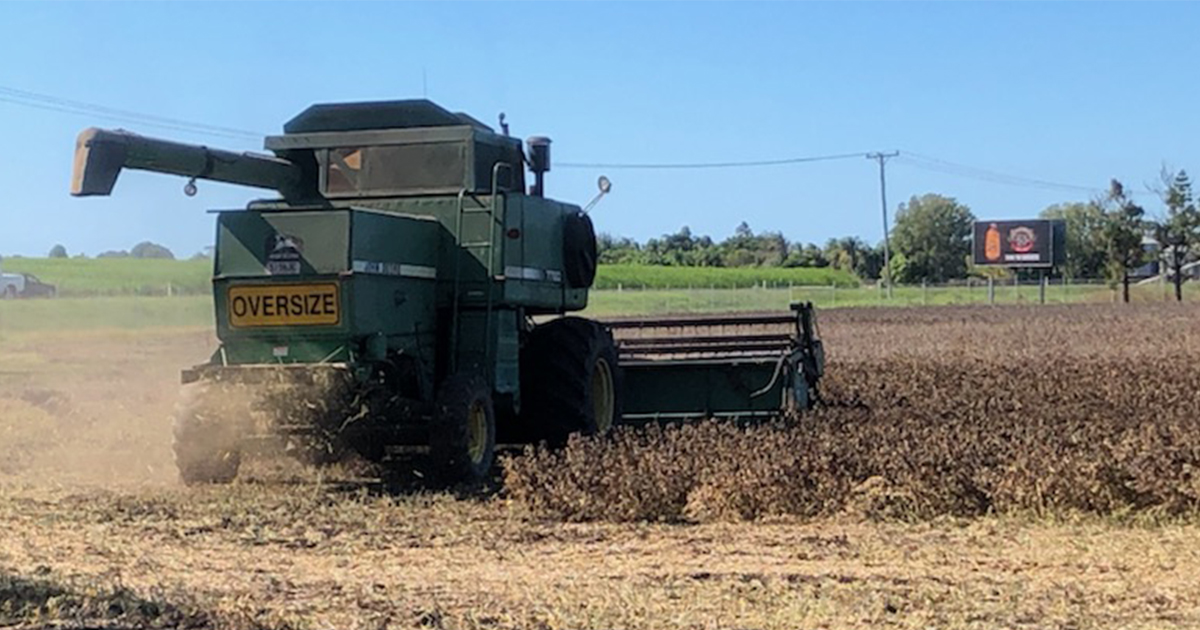MRL essentials for pulses
by Paul McIntosh, Pulse Australia Northern Industry Development manager
I get fairly irate when I hear from a pulse exporter that a consignment of chickpeas has been rejected because of glyphosate residue levels being above the importing country's Maximum Residue Level or MRL. In a separate incident I was informed of a consignment of mungbeans that registered residues of the grass herbicide Haloxyfop exceeding the relevant MRL.
These incidents are avoidable and are unacceptable. Most of the pulses (including peanuts and soybeans) grown in Australia are sold directly into the food supply chain with little if any processing done to them before people consume them. Large portions of the Australian pulse production is sold into export markets where Australia has a reputation for producing good quality, clean grain. When consigned grain exceeds the MRL it poses real risks to human health and to Australia's international reputation.
Glyphosate is under a lot of pressure locally and globally and industry does not need an Australian graingrower failing to declare, or having non- adherence to the WHP (withholding period), in the race to get their crops harvested.
 Only use registered products for desiccation and always strictly observe withholding periods at harvest.
Only use registered products for desiccation and always strictly observe withholding periods at harvest.
Residue limits in any crop are at risk of being exceeded or breached where pesticides:
- are applied at rates higher than the maximum specified
- are applied more frequently than the maximum number of times specified per crop
- are applied within the specified withholding period (i.e. within the shortest time before harvest that a product can be applied)
- are not registered for the crop in question.
While it is easy to say 'always read and follow the label directions', these directions are not always easy to find or to interpret. It pays to ask and double check before use and to ensure you have the right product and are applying it in the right way and at the right time. Agronomists who specialise in managing pulse crops should be well aware of the best practice application and can help growers decifer the labels. It also pays to be in contact with the marketing company during the season because they are keeping track of MRL requirements in the countries that are buying our pulses. Listen to this short audio clip of QDAF senior entomologist Hugh Brier regarding pesticide use (GRDC).
We need to be totally correct in our usage patterns of all our pesticides in our crops, especially pulses. Some push too hard to achieve a clean crop with no weeds/disease/pests, by using only chemical options and that can get cause enormous problems for the farmer, their marketing company and ultimately other Australian farmers, if overseas markets reject Australia's crop because of failure to observe MRLs.
The other big ticket item is pesticide application rates. There can be a temptation to increase the rate applied to speed the kill or increase the effect but this must be avoided at all costs. Applying products at above-label rates is illegal and a high risk practice – potentially causing immense damage to the whole industry and also leading to problems with pesticide resistance.
Spray drift is another serious consideration as there have been too many cases of product being rejected due to residues of products that the grower never applied. Whatever you spray must stay on target. Keep in mind that once pesticide particles are air-borne they can travel a long way in the right conditions.
One last point is the Statuary Declarations that need to be filled in correctly at the delivery shed or silo. This is the last chance to flag a potential problem before the grain is exported to a country that has low or nil MRL for a particular pesticide. Dumping the load and leaving the depot with your fingers crossed regarding the MRLs is not the way to go.
Grain marketing and pesticide residues factsheet
Grower declarations protect the industry
Please obey all the rules when using agricultural chemicals, including following the withholding periods (WHP), and use as many cultural weed, pest and disease control options as possible rather than always turning to agricultural chemicals as the first or only option.
All registered products can be found using the APVMA - Australian Pesticide and Veterinary Medicines Authority database.
A list of current and recently expired minor use permits (MUP) are available for:
Some MUPs have quite short currency so take care to check that the product is permitted for use at the time you use it and in your state.
Observe all withholding periods and record all product use on the relevant statutory declaration:
- GTA Grain Commodity Vendor Declaration
- GTA SafeMeat Declaration Form
- Commodity Declaration Form (mungbean).
Pesticides and veterinary residues
Source: APVMA website
About MRLs
The APVMA sets maximum residue limits (MRLs) for agricultural and veterinary chemicals in agricultural produce, particularly produce entering the food chain. These MRLs are set at levels that are not likely to be exceeded if the agricultural or veterinary chemicals are used in accordance with approved label instructions. At the time the MRLs are set, the APVMA undertakes a dietary exposure evaluation to ensure that the levels do not pose an undue hazard to human health.
About withholding periods
The withholding period is the minimum period that must elapse between last administration or application of a pesticide or veterinary medicine, including treated feed, and the slaughter, collection, harvesting or use of the animal or crop commodity for human consumption. WHPs are mandatory for domestic slaughter and are on the label of every registered product.
Read Pulse Check blog articles | Pulse Check Coastal facebook | Subscribe to the monthly newsletter

